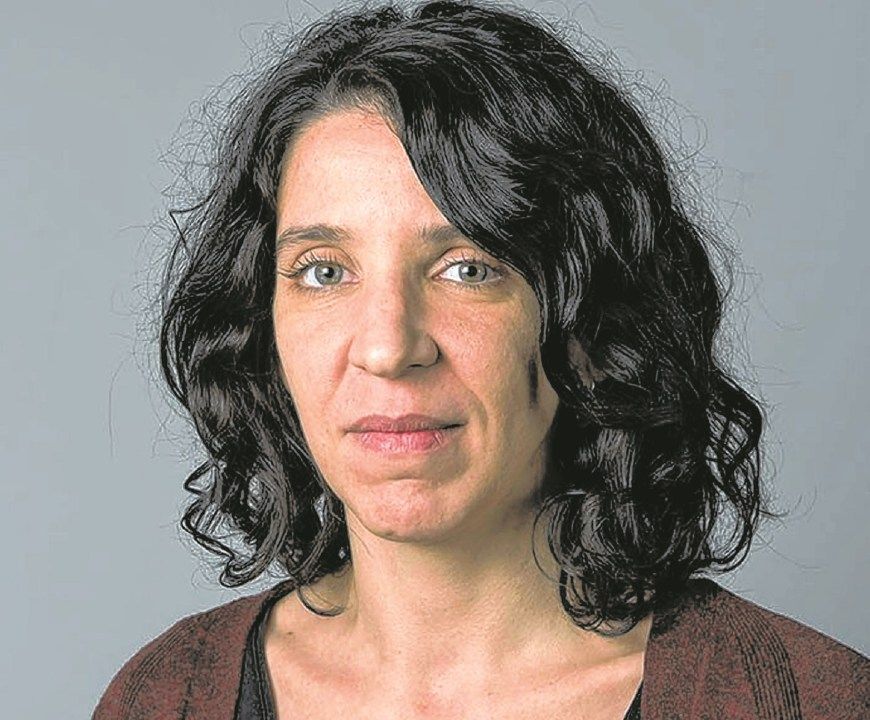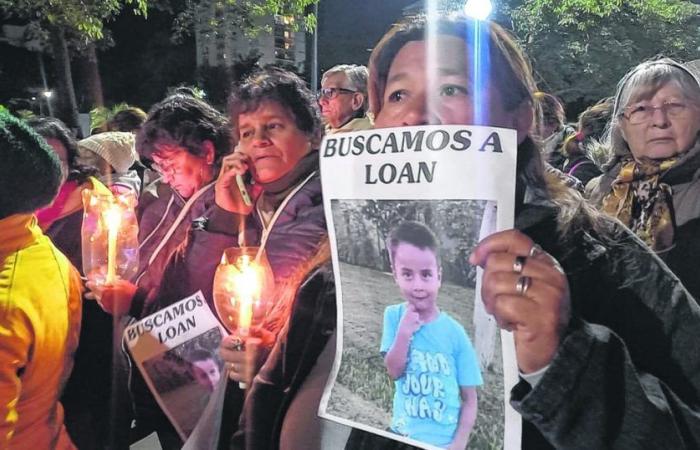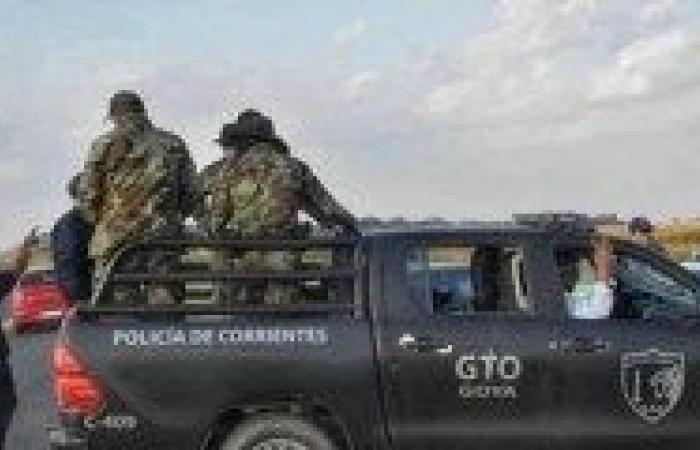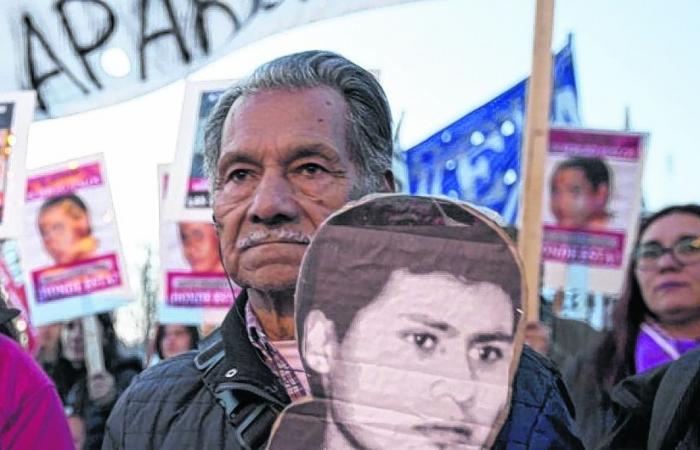A person disappears. Sequential time disintegrates, the cadence of waiting begins a cycle that no one knows how long it will last. The question of whether someone belongs to the world of the living or the dead is, at these moments, imprecise.
“The individual disappearances were always there. Its causes do not lie in great events; Suddenly, the threads that make up a life embroider an absence that is perceived as inexplicable. There was choice, institutions, custom, geopolitics or chance. The existence of those who remain is completely disrupted: they search, investigate, claim, wait. Some of the people respawn, some don’t. Some chose to get lost, flee, abandon, break the pact of genealogy at any cost. Others died and no one helped them find their loved ones. Sometimes they are forgotten. Others became magnetic mysteries or banners, flags, icons, books.”
This is one of the first paragraphs written by journalist and editor Ximena Tordini in her book “Disappeared men and women in contemporary Argentina. Who are they, what happened to them and why justice and the State should wake up”, published by “Siglo Veneciano”.

We spoke with her a few hours ago in the context of the disappearance of Loan, the 5-year-old boy, in Corrientes.

For years, Tordini has been investigating this issue, delving into many stories, removing them from the police news register and from all the morbidity that they imply and that the State and society do not see as a problem to be faced and resolved.
A boy who didn’t know how to find his way home, a girl who was taken far away. They are not in what until yesterday were their worlds. Those who are looking for them are desperate and need us to stop for a moment and pay attention, look, talk…
Loan’s case highlights a fundamental problem in Argentina: the disappearance of children.
According to Ana Rosa Llobet, president of Missing Children Argentina, There are currently 112 missing children in the country, of which at least 74 are minors while the rest are over the age of majority. Between 4 and 5 disappearances are reported per day; In the year there are about 1,460. A drama.
“The first question would be to be able to distinguish from these statistics what type of phenomena these disappearances respond to. What we see on the surface is a disappearance, that is, the absence of a person from their family, work or community environment. Then we see that each of these disappearances responds to a different nature, many times,” Tordini tells “Río Negro.”
“If it is the case of a boy of a girl, the disappearance may respond to a complex criminal phenomenon that in the investigators’ jargon is called parental abduction. In other cases it refers to a runaway from home, which expresses situations of violent parenting violence within the family that lead young adolescents to leave home and not want to return.”
Therefore, he emphasizes, “When these figures appear, the first thing to do to have effective public policies regarding this phenomenon is to have the ability to build knowledge.” and to distinguish what each of the disappearances are expressing.”
“People do not have the ability to disappear; disappearance is a manifestation in a given environment of something else that has happened.”
There are also other disappearances that were later explained by accidents or suicides and that were not properly identified at the time.
“But when an absence cannot be explained in a reasonable time, it becomes a disappearance,” the interviewee notes.
We must be careful with narratives that are constructed with total lightness, he recommends. Why feed urban legends?
The missing are everywhere, he says.
There are “those”, those who were stolen to tame the rebellions. “During the first months of 1977 a word was invested with a particular energy in Argentina. “First of all, “disappeared” was a community construction, a social invention that could name a specific power device in real time,” he highlights. A slogan was born that marked part of our history: “they took them alive, we want them alive.”
And there are “these missing people”: The cis woman who runs away, the trans woman who is not here because the man who killed her also taught her a lesson once she was dead; a boy who was trapped in the borders of a penal system; a cis man who found out what he shouldn’t have.a trans man who received hate, A boy who didn’t know how to return home, a girl who was taken far away… They are not in what until yesterday were their worlds.
There are ecosystems full of noise, says the interviewee: dispossession, violence, lies, secrets, screams, will to dominate, energy of flight, abandonment, money, death, chance.
And when for these reasons and many more they stop being there “Those who seek them need the community, they need others to do something: to pay attention, to look, to talk. They expect the same from the State: to find, bring, return, persecute, punish. They believe that saying “disappeared-disappeared” shortens the path. “Sometimes they are right.”
Let us return to the point between those who disappeared and those who disappeared. “Contemporary Argentine disappearances are not the result of a single device, nor can they always be explained by what happened before. Describing them and placing them in public conversation as if this were the case, as if each disappearance entailed a repetition in a geometric series, makes it difficult to understand what causes them and to find the person who is being sought. Analogies with the past are powerful, both to make these absences visible and to perpetuate them: they rescue them from one noise but submerge them in another,” writes Tordini in his book.
Now, some questions.
Where are the disappearing powers of the present in our country?
What effects do these disappearances have on social life? “They cannot yet be explained in depth: do they generate terror, like dictatorial disappearances? Do they produce ways of life? Do they govern social conflict? Do they condition the way we walk through cities? Does the fear of disappearing give rise to any of our customs? We do not yet have that knowledge; we are just beginning to remove contemporary disappearing powers from the noise where they thrive,” the author of the book in this article states.
The truth is that what is common to all disappearances – those and these – is the act of searching. It is that act that announces them.
The voice and body of most of those searches are their families. We have seen that many of them leave shreds of their lives in this titanic struggle, so alone.
“It is families, pushed by circumstances, who come out into public life and create a habitat for those who are absent: they name them, demand them, take care of them, learn to cite case law, to offer the tip of a finger so that a drop of blood will flow that may never have anyone to compare it with…”, reflects Tordini.
But that family strength has a limit, it is limited.
This editor and journalistic researcher concludes: “To question the hierarchy of lives that are valuable and deaths that move, something more than the energy of biological kinship is needed. The disappeared men and women of today are our contemporaries and we have a responsibility towards them. The responsibility of removing them from the noise so that the living can return and the dead can finally leave.”
The State, ineffective in the face of disappearing powers

“At least three areas of the State produce missing persons in Argentina today,” says Ximena Tordini in her book published by siglo twenty-one, “Who are they, what happened to them and why justice and the State should wake up.”
The author lists at her discretion what the disappearing powers of the present are after years of research.
The judicial system
“They are of poor quality,” says Tordini. “On many occasions, judicial officials do not know how to investigate these types of cases: they lock themselves into trite hypotheses that limit the search; they do not know which are the state agencies that could be activated, and much less how they function; they accumulate pages, they have no strategy, they stagnate. Other times, they simply do not investigate either the whereabouts inquiries or the findings of unidentified dead people. The lack of capacity and apathy produce a peculiar phenomenon: accidents, suicides, murders, escapes become disappearances, some of which last for decades, even though the solution was in the office next door or a few meters from the place where the person was last seen.”
The bureaucracies that manage identity and death
“No executive, legislative or judicial administration has yet proposed to systemically transform the poor functioning of the lanes we cross when we die: some belong to the health system, others to the population registry, others to a funeral system with large privatized areas, others to the judicial system, others to the police bureaucracy.”
State violence. “The provincial police, the Buenos Aires city police, the federal police, the airport police, the gendarmerie, the prefecture, the penitentiary services are the most violent arms of the State, those that hurt within and outside the law.”
Tordini also refers to other disappearing forces that reside in our society, such as gender-based violence. “A poor investigation can transform a femicide into a disappearance,” she warns.
There are other disappearances, Tordini continues. “Children fleeing domestic violence, a euphemism that is still used to cover up harassment, sexual abuse, and physical and psychological violence. It is an issue that society refuses to treat as a public matter, a last bastion of the personal that does not become political: abuse as an organizer of upbringing.”
And then there are those missing people who don’t even have this status because nobody is looking for them. “Locked up in a public psychiatric institution that doesn’t know their names or find out. They were admitted to a hospital wounded in a street fight and nobody claimed them. They died in the street, on a corner, from the cold, from illness.”
Criminal organizations
“And some cases related to human trafficking. The most iconic case is that of Marita Verón, where the courts found that she was the victim of a network dedicated to sexual exploitation in Tucumán. Marita is still missing,” Tordini told “Río Negro.”
“Disappearances continue to occur because social violence, state violence and issues that have to happen in people’s lives circulate in our community life. The question, then, remains why some disappearances are consolidated in our country,” the journalist concludes.
The author
Ximena Tordini is editor of Crisis magazine and works in communication and human rights in several organizations, including CELS.
He studied Communication Sciences, Letters and Cultural Journalism at the UBA and the UNLP.
He has alternately devoted himself to judicial and cultural journalism, in various public and private graphic media.
In recent times, she has devoted herself to researching the functioning of the Judiciary and the bureaucracies of identifying people, contemporary ways of relating to death and the Argentine human rights movement. @ximetordini
More than a century committed to our community. I chose the best information, analysis and entertainment, from Patagonia to the entire country.
I want my subscription
#Argentina






